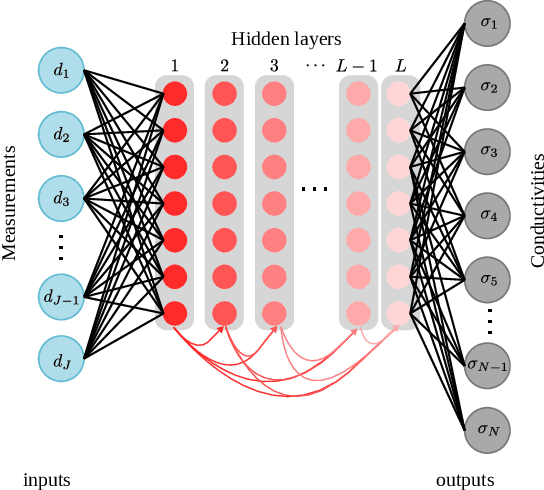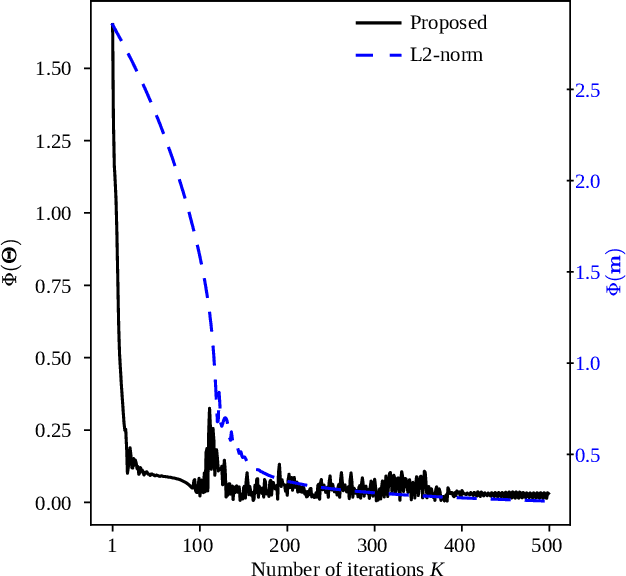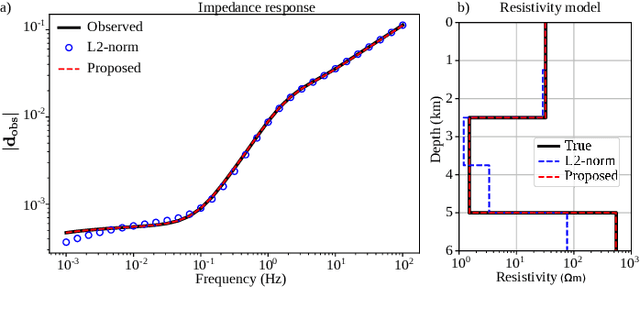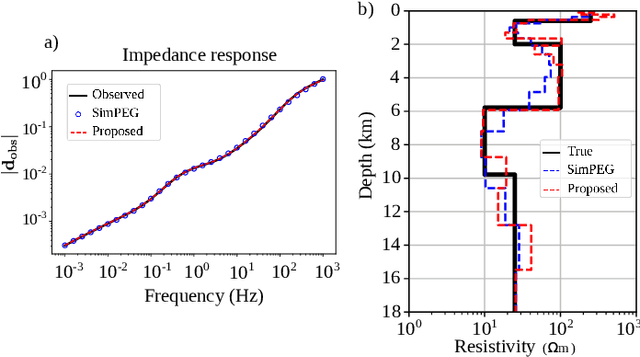Physically Guided Deep Unsupervised Inversion for 1D Magnetotelluric Models
Paper and Code
Oct 20, 2024



The global demand for unconventional energy sources such as geothermal energy and white hydrogen requires new exploration techniques for precise subsurface structure characterization and potential reservoir identification. Magnetotelluric (MT) inversion is crucial for these tasks, providing critical information on the distribution of subsurface electrical resistivity at depths ranging from hundreds to thousands of meters. However, traditional iterative algorithm-based inversion methods require the adjustment of multiple parameters, demanding time-consuming and exhaustive tuning processes to achieve proper cost function minimization. Although recent advances have incorporated deep learning algorithms for MT inversion, these have been primarily based on supervised learning, which needs large labeled datasets for training. Therefore, it causes issues in generalization and model characteristics that are restricted to the neural network's features. This work utilizes TensorFlow operations to create a differentiable forward MT operator, leveraging its automatic differentiation capability. Moreover, instead of solving for the subsurface model directly, as classical algorithms perform, this paper presents a new deep unsupervised inversion algorithm guided by physics to estimate 1D MT models. Instead of using datasets with the observed data and their respective model as labels during training, our method employs a differentiable modeling operator that physically guides the cost function minimization, making the proposed method solely dependent on observed data. Therefore, the optimization problem is updating the network weights to minimize the data misfit. We test the proposed method with field and synthetic data at different acquisition frequencies, demonstrating that the resistivity models are more accurate than other results using state-of-the-art techniques.
 Add to Chrome
Add to Chrome Add to Firefox
Add to Firefox Add to Edge
Add to Edge